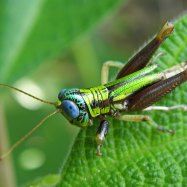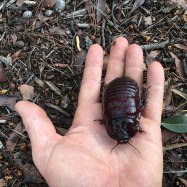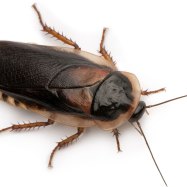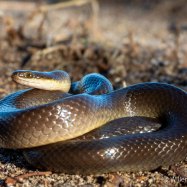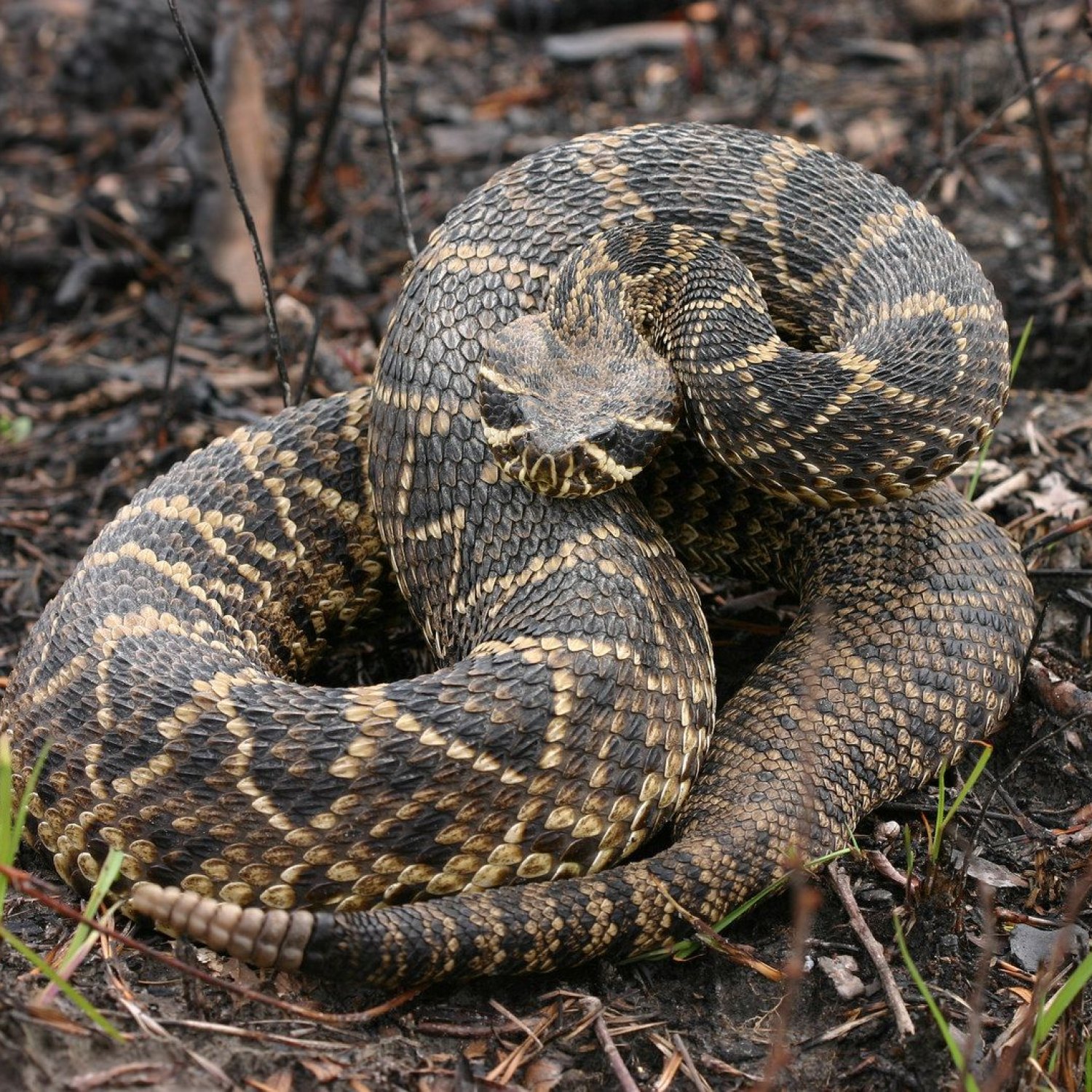
Eastern Diamondback Rattlesnake
Up to 8 feet
The Eastern Diamondback Rattlesnake is a venomous reptile found in the coastal plains, pine flatwoods, and sandy soils of the southeastern United States. With a maximum length of 8 feet, it is the largest venomous snake in North America. Belonging to the Viperidae family, its thick-bodied shape makes it easily distinguishable from other snakes. Beware of its famous rattle! #EasternDiamondbackRattlesnake #Viperidae #VenomousSnake #SoutheasternUS
Animal Details Summary:
Common Name: Eastern Diamondback Rattlesnake
Kingdom: Animalia
Habitat: Terrestrial
The Eastern Diamondback Rattlesnake: A Master of Camouflage and Adaptation
In the southeastern United States, among sandy and pine-covered landscapes, lies a creature that is both feared and revered – the Eastern Diamondback Rattlesnake. With its scientific name Crotalus adamanteus, this venomous snake is also commonly known as the Eastern Diamondback Rattlesnake. It is a member of the Animalia kingdom, Chordata phylum, Reptilia class, Squamata order, and Viperidae family, making it a fascinating subject for natural language processing (NLP) and a constant source of fascination for nature lovers.From its striking appearance to its unique adaptations, there seems to be no end to the secrets this species holds Eastern Diamondback Rattlesnake. As the largest rattlesnake species in the world, it is an imposing predator that commands respect in its habitat. In this article, we will delve deeper into the life of the Eastern Diamondback Rattlesnake, exploring its physical characteristics, behavior, and significance in its environment.
Appearance and Habitat
The Eastern Diamondback Rattlesnake can be identified by its thick and heavy body, with adults reaching an average length of 6 to 7 feet and sometimes even up to 8 feet. It has a triangular head, a stout and bulky appearance, and a thick, dark-colored body covered in diamond-shaped markings. Its background color ranges from grayish-brown to a rusty-brown shade, helping it blend into its sandy surroundings.These snakes are known to inhabit a specific type of habitat, living in the coastal plains, pine flatwoods, and sandy or sandy loam soils of the southeastern United States. They are commonly found in states such as North Carolina, South Carolina, Georgia, Florida, and Alabama. Their preferred habitat provides them with the perfect cover for capturing prey and escaping predators.
Diet and Feeding Behavior
Hunting mostly at night, the Eastern Diamondback Rattlesnake is a carnivorous predator with a diet consisting mainly of small mammals, such as rodents, rabbits, and birds Emu. They are equipped with sharp fangs and venomous glands, which they use to immobilize their prey and make it easier to swallow.These snakes are well-adapted to their environment, making use of various hunting techniques to capture their food. One of their unique strategies is the "sit-and-wait" method, where they stay still and camouflage themselves while waiting for their prey to come near. Once an unsuspecting animal comes within striking distance, the rattlesnake will then pounce with its venomous bite.
Camouflage and Defense Mechanisms
One of the most interesting characteristics of the Eastern Diamondback Rattlesnake is its ability to blend into its surroundings through camouflage. Its coloration, with a combination of dark markings and a natural sandy hue, helps the snake disappear into the background, making it difficult for predators and prey alike to spot it.Another notable feature of these snakes is their trademark rattle, located at the end of their tail. This rattle is made up of segmented and hollow keratinized scales that vibrate when the snake rattles its tail. This serves as a warning signal to potential predators, mostly humans, that they are in the presence of a dangerous creature.
Breeding and Reproduction
The mating season for Eastern Diamondback Rattlesnakes begins in March and extends throughout the summer months. During this time, male snakes compete for the attention of females by performing a series of impressive and intricate mating dances. Once a male and female have successfully mated, the female can hold the sperm for up to a year before fertilizing her eggs.Females give birth to live young, with a litter size ranging from 8 to 12 babies, after a gestation period of 3 to 4 months. These young snakes are born already equipped with venom glands and fangs, making them just as dangerous as their adult counterparts. However, they are highly vulnerable to predation and have a low survival rate, with only a few making it to adulthood.
Significance in the Ecosystem
As a predator, the Eastern Diamondback Rattlesnake plays a vital role in maintaining balance in its ecosystem. By keeping the population of small mammals in check, these snakes prevent overgrazing and help maintain the health and diversity of their habitat.Additionally, rattlesnakes like the Eastern Diamondback are also a valuable source of scientific research. Their venom has been studied and used in the development of antivenom, which is used to treat snake bites. Venom from these snakes also has potential medical applications, such as in pain management and the treatment of blood clots.
Conservation Status and Threats
Despite its importance in the ecosystem, the Eastern Diamondback Rattlesnake is facing significant threats to its survival. Habitat destruction, road mortality, and intentional killing by humans are among the top threats to this species. These snakes also face competition for food and resources with non-native species, such as feral cats and fire ants.As a result, the International Union for Conservation of Nature (IUCN) has listed the Eastern Diamondback Rattlesnake as a species of least concern. However, efforts are being made to protect and conserve these snakes, with many states implementing laws and regulations to control human interactions with them.
Final Thoughts
In conclusion, the Eastern Diamondback Rattlesnake is a fascinating and elusive creature that calls the southeastern United States home. Its impressive size, unique adaptations, and vital role in the ecosystem make it a species worth studying and protecting. While they may instill fear in some, these snakes are an integral part of a diverse and delicate ecosystem, and their conservation should be a top priority for all.

Eastern Diamondback Rattlesnake
Animal Details Eastern Diamondback Rattlesnake - Scientific Name: Crotalus adamanteus
- Category: Animals E
- Scientific Name: Crotalus adamanteus
- Common Name: Eastern Diamondback Rattlesnake
- Kingdom: Animalia
- Phylum: Chordata
- Class: Reptilia
- Order: Squamata
- Family: Viperidae
- Habitat: Terrestrial
- Feeding Method: Carnivorous
- Geographical Distribution: Southeastern United States
- Country of Origin: United States
- Location: Coastal plains, pine flatwoods, and sandy or sandy loam soils
- Animal Coloration: Grayish-brown with diamond-shaped dark markings along its back
- Body Shape: Thick-bodied
- Length: Up to 8 feet
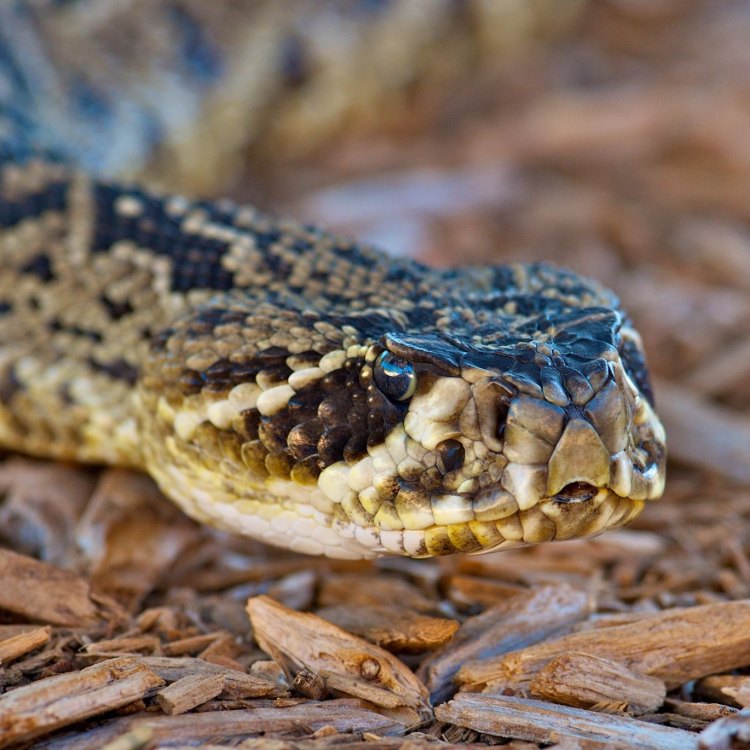
Eastern Diamondback Rattlesnake
- Adult Size: 6 to 7 feet
- Average Lifespan: 10 to 20 years
- Reproduction: Sexual
- Reproductive Behavior: Mating season typically occurs in the spring
- Sound or Call: Rattlesnake rattling sound
- Migration Pattern: Limited distance migration
- Social Groups: Solitary
- Behavior: Nocturnal and ambush predator
- Threats: Habitat loss, persecution by humans, and road mortality
- Conservation Status: Least Concern
- Impact on Ecosystem: Control of rodent populations
- Human Use: Sometimes captured for snake shows and kept as pets
- Distinctive Features: Large size, rattle at the end of the tail
- Interesting Facts: The Eastern Diamondback Rattlesnake is the largest rattlesnake species and has the most potent venom of any snake in North America.
- Predator: Birds of prey, larger snakes, and mammals
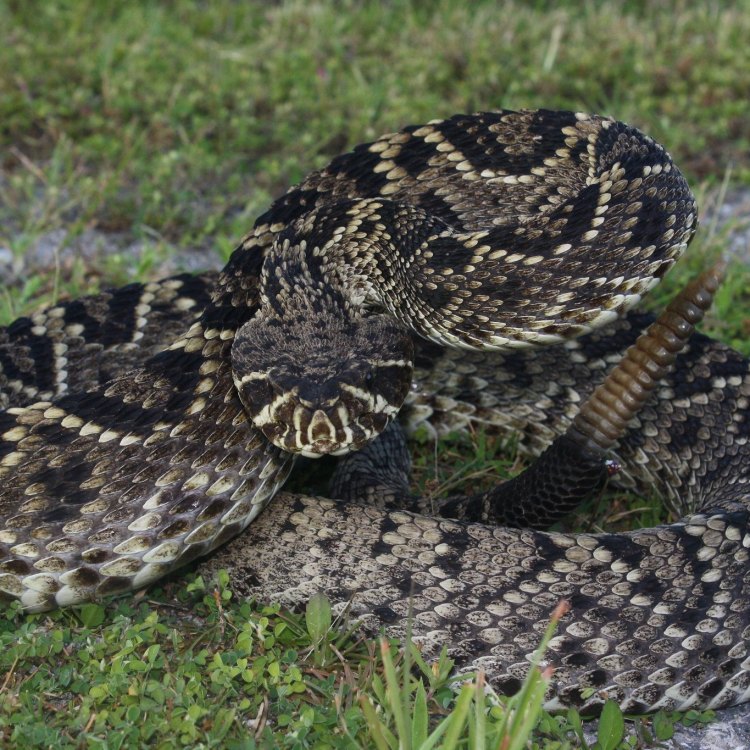
Crotalus adamanteus
The Eastern Diamondback Rattlesnake: A Vital Creature of the Wild
The Eastern Diamondback Rattlesnake, also known as Crotalus adamanteus, is a species of venomous pit viper found in the southeastern United States. It is a formidable creature, with an adult size ranging from 6 to 7 feet and an average lifespan of 10 to 20 years. These magnificent snakes have captivated our imagination for centuries with their distinctive features, reproductive behavior, migration patterns, and reputation as a fearsome predator.In this article, we will delve deeper into the world of the Eastern Diamondback Rattlesnake, exploring its unique features, behavior, and impact on the ecosystem PeaceOfAnimals.Com. So, let's slither our way into the wild and discover the fascinating world of this magnificent creature.
Distinctive Features
The Eastern Diamondback Rattlesnake is a sight to behold, with its large size and distinctive features. It is the largest rattlesnake species, and one of the largest venomous snakes in North America. It is easily recognized by the diamond-shaped markings on its back and the rattle at the end of its tail, which gives it its name.
But what makes it truly remarkable is its venom. The Eastern Diamondback Rattlesnake has the most potent venom of any snake in North America, making it a feared predator in the wild. Its venom is a complex mixture of enzymes and toxins that can cause tissue damage, neurological effects, and even death if untreated.
Reproduction and Mating Behavior
Like all snakes, Eastern Diamondback Rattlesnakes are sexual reproducers. Mating season typically occurs in the spring, with males competing for the attention of females Elephant Fish. The males engage in an elaborate ritual of combat, where they entwine their bodies and push and shove each other to determine the dominant male.
Once a female is chosen, the male will then entwine his tail with hers in a process called the cloacal kiss, where they will remain for several hours to a few days. After this, the female will give birth to a litter of 5 to 20 live young, which are fully independent at birth. The Eastern Diamondback Rattlesnake is one of the few venomous snakes that give live birth rather than laying eggs.
Migration Patterns and Social Groups
Unlike some snake species, Eastern Diamondback Rattlesnakes do not migrate over long distances. They have a limited distance migration pattern, where they may move a few miles from their original location to find better hunting grounds or suitable temperatures.
In terms of social behavior, these snakes are solitary creatures, only coming together during the breeding season or for basking in the sun. They do not form social groups like other animals and prefer to live and hunt alone.
Behavior and Predation
The Eastern Diamondback Rattlesnake is a nocturnal and ambush predator, meaning they are active at night and hide during the day, waiting for unsuspecting prey to come their way. They have excellent camouflage, blending in with their surroundings, making it easier for them to catch their prey.
Their diet consists mainly of small mammals, such as rats, mice, and rabbits, but they have been known to feed on birds and other reptiles as well. Their venom is used to immobilize their prey and aid in digestion, making them an important predator for controlling rodent populations in their habitats.
Despite their fearsome reputation, Eastern Diamondback Rattlesnakes are also preyed upon by larger snakes, birds of prey, and mammals. Juvenile snakes are more susceptible to predation, and only a small percentage of young snakes will survive to adulthood.
Threats and Conservation Status
Like many other snake species, the Eastern Diamondback Rattlesnake faces numerous threats in the wild. Habitat loss and fragmentation, caused by urbanization and development, have led to a decline in their population. They are also persecuted by humans, who often kill them out of fear or for their beautiful and unique skin.
Another major threat to these snakes is road mortality. Due to their limited distance migration pattern, they are often forced to cross roads, making them vulnerable to being hit by vehicles. This is not only a significant cause of death for Eastern Diamondback Rattlesnakes, but it also contributes to the decline of their prey populations.
The Eastern Diamondback Rattlesnake is currently listed as a species of Least Concern on the IUCN Red List. This means that, at present, their population is stable and not at risk of extinction. However, conservation efforts are still needed to protect these remarkable creatures and their habitats from further threats.
Impact on the Ecosystem
Many people view snakes, especially venomous ones, as harmful and dangerous creatures. However, Eastern Diamondback Rattlesnakes play a crucial role in their ecosystem. As ambush predators, they help to control rodent populations, which can have a significant impact on the environment if left unchecked.
Their venom also contains powerful enzymes that have shown potential in treating heart attacks, blood clots, and even cancer. Research into the medicinal properties of snake venom may lead to significant breakthroughs in modern medicine, making these creatures even more valuable to the ecosystem and human health.
Human Use and Interesting Facts
Due to their impressive size and distinctive features, Eastern Diamondback Rattlesnakes are sometimes captured for snake shows and kept as pets. However, this is not recommended, as they require specialized care and specific habitats to thrive. Keeping them in captivity also presents a potential danger to both the snake and its owner.
Some interesting facts about Eastern Diamondback Rattlesnakes include their ability to swim, their slow reproductive cycle, and their ability to go weeks or even months without food. They are also one of the few snakes that make a distinctive rattling sound with their tail to warn potential predators of their presence.
In Conclusion
The Eastern Diamondback Rattlesnake is a vital creature of the wild, with its unique features, behavior, and impact on the ecosystem. Despite being feared and often misunderstood, these snakes play a significant role in their habitats and have even shown potential in human medicine.
It is important to remember that snakes, like all animals, are essential to maintaining the delicate balance of nature. They should be respected and protected, rather than feared and persecuted. So, next time you come across an Eastern Diamondback Rattlesnake, remember its vital role in the wild and appreciate its beauty and significance in our ecosystem.
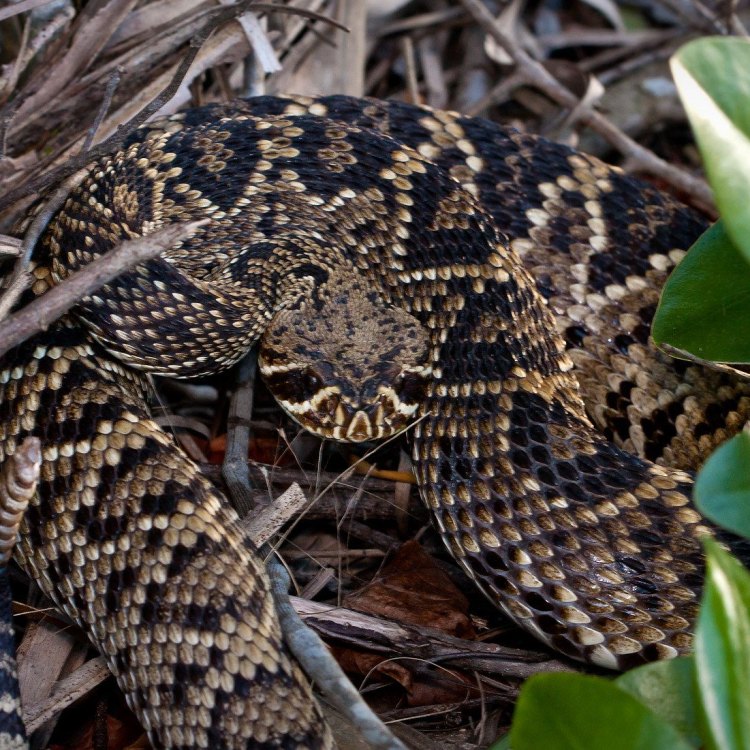
The Eastern Diamondback Rattlesnake: A Master of Camouflage and Adaptation
Disclaimer: The content provided is for informational purposes only. We cannot guarantee the accuracy of the information on this page 100%. All information provided here may change without prior notice.

